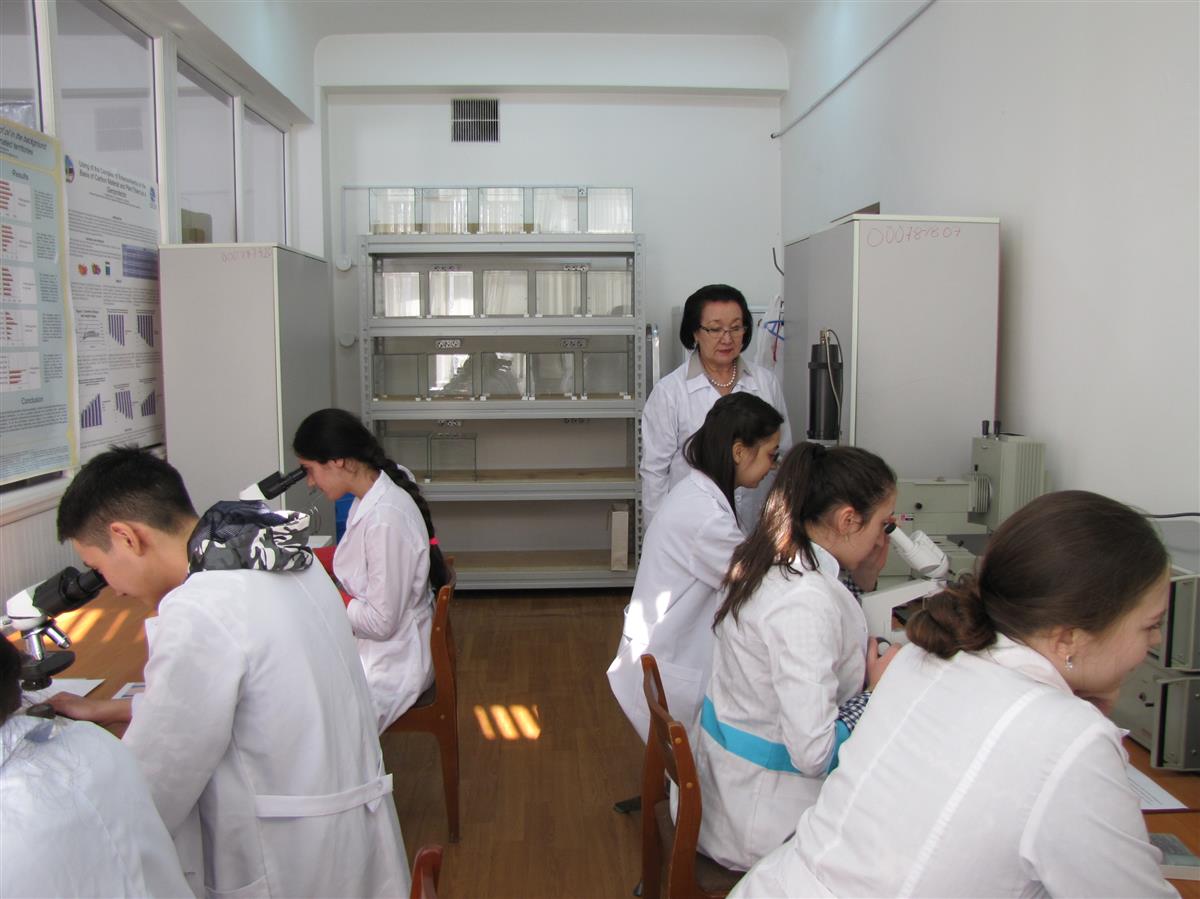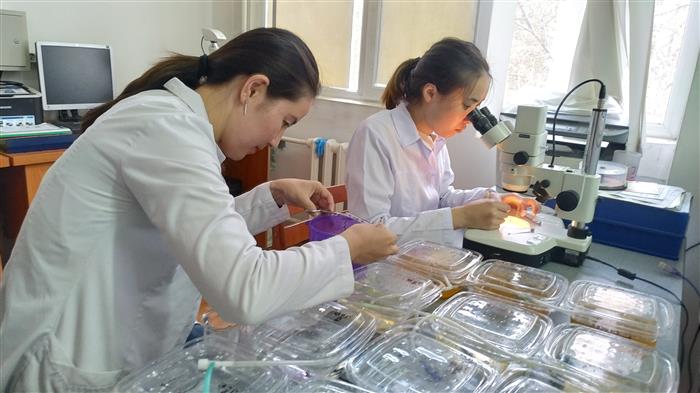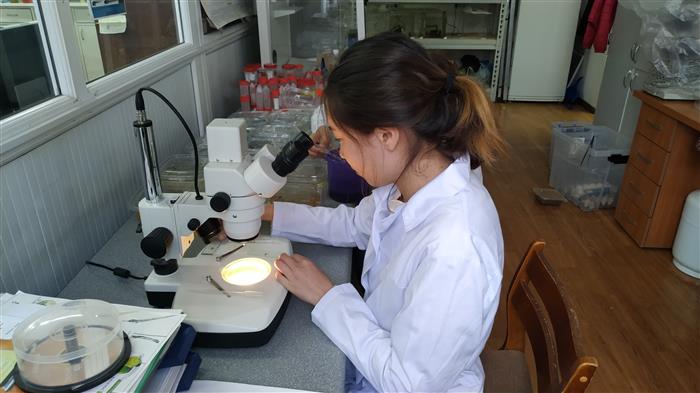Animal Morphology Laboratory
Views: 2990

Animal Morphology Laboratory
The main areas of scientific activity of the laboratory
Biology, Ecology, Toxicology:
- study of the toxic and genotoxic effects of environmental pollutants (OS) on biota;
- search for biomarkers of the cytotoxic effect of pollutants;
- search and development of protective substances for the toxic and genotoxic effects of environmental pollutants (OS) on biota, geroprotectors;
- determination of the environmental risk of exposure to negative OS factors.
Currently, work is underway to study the cyto- and embryotoxic effect of water and sediments of Lake Balkash on fish and amphibians. A comprehensive biotesting of water and bottom sediments of the lake. Balkash on embryos and juveniles of such test objects as zebrafish (Danio rerio) and Spur frog (Xenopus laevis), as well as on background species of commercial and non-commercial fish: asp (Aspius aspius), roach (Rutilus rutilus), and mustard (Rhodeus ocellat) ) and background species of amphibians: lake frog (Rana ridibunda) and green toad (Bufo viridis). Biotesting methods detect the level of mortality of embryos, the frequency of developmental disorders. Using biochemical and cytological methods, the mechanisms of the cyto- and embryotoxic effects of the waters and sediments contaminated with heavy metals are studied. Balkash on juvenile background species of fish and amphibians.
Area 36 sq.m., number of seats - 8.
Serviced specialties - graduation work of students of the specialty "5B060700 - Biology", master's theses and reading elective courses for undergraduates in the specialty "6M060700 - Biology", performing doctoral theses and reading elective courses for doctoral students of the specialty "6D060700 - Biology".
Name of workshops / specializations conducted in the laboratory indicating the equipment used:
Workshops (laboratory classes) in the disciplines “Cellular biology”, “Modern methods of cell biology”, “Modern methods of developmental biology” using a Micros digital microscope, a Leica digital microscope, a Motic320 digital stereo microscope, Binder B28, Binder BDE2 thermostats, Eppendorf 5417R centrifuge, OHAUS RV214 electronic scales, OHAUS Scout Pro SPU123, GFL 20102 redistillator, Apel PD303UV spectrophotometer, Platinum 500 low-temperature freezer, Thermocycler C1000 PCR analyzer, 3000 Evolution biochemical analyzer and other devices.












